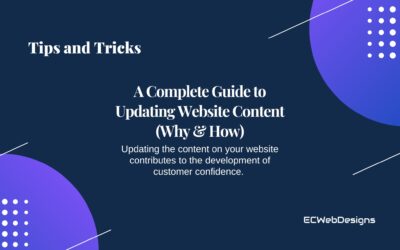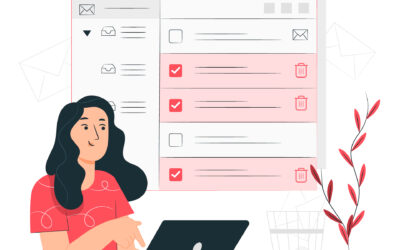Through the experience we gained performing technical audits and website assessments, we’ve compiled a list of some of the most common website issues and how to resolve them.
The act of conducting a technical audit on your website on a regular basis is a great, proactive thing to do, but actually fixing the errors found as a result of the audit is another story. Fortunately, the majority of these website problems can be easily fixed…if you know where to start.
Here is our list of the most common website issues and how to fix them
1. Duplicate Page Content
Content that appears more than once on your site can compete with each other, and results in search engines returning results for only one of the pages instead of all of them.
Make sure each of your pages has unique metadata (titles and descriptions) to mitigate this problem. Siteliner, an online tool, can be used to scan your website and find duplicate content that can be edited.
2. Expiring Domain Name
A long-lasting and active website is more likely to appear in search engine results. Multiple-year registration of your domain name indicates commitment to your business, your site, and your content.
To ensure that your site isn’t construed as ‘spammy’, review your domain registration and renew it annually.
3. HTTP Errors
It can be very frustrating for website visitors to encounter HTTP errors. As all of us have experienced it ourselves, we know first hand how frustrating it can be to be browsing a website, and then you get an HTTP error message.
There are a few kinds of errors that the web server indicates, and these are the most common ones:
401 (Unauthorized)
This occurs when a person attempts to access a webpage to which they do not have permission. If this occurs, check the URL of the page that is causing the error; it’s possible that the link clicked is one that only authorized users have access to. For example, users that have login credentials.
403 (Forbidden)
The error occurs when a request can’t be completed by the server since the user doesn’t have permission to access it. Slightly different than a 401 error, a 403 error recognizes that a user may be logged in with a valid user ID and password, but does not have authorization to access the specific page. Typically, this means the user needs to have their user account access updated by the website administrator.
404 (Not Found)
The most common error most people see is this one. 404 errors occur when a user tries to access a webpage that doesn’t exist or has been removed. An outdated redirected page, a broken link, or an incorrect URL can cause this error. In order to fix this error, you should review all the crawl errors in Google Search Console, and then submit broken link re-directs in your site’s WordPress or content management system, or have your web developers do it for you.
500 (Internal Server Error)
Users typically see this type of error message quite often; it’s pretty much just a generic error message for any type of internal server error that cannot be easily determined. The user can usually fix this error by refreshing their web browser if the error is caused by the server being overloaded and unable to process requests quickly, deleting their cookies, or visiting the page at another time when the server isn’t so overloaded. On your end, however, you can usually diagnose and correct the error using WordPress or your content management system.
504 (Gateway timeout)
504 errors are also common, which occur when one server does not receive a timely response from another server when trying to load a page. It is not always the fault of a website, but you can troubleshoot this issue in a few ways. If your website has a corrupted database, and you use WordPress, you can fix it and optimize your database by using a plugin like WP-DBManager. It could also be a problem with your WordPress .htaccess file. Perhaps you could contact your hosting provider to find out if the problem lies with them.
4. Long Forms
When you have conversion forms on your website, such as: “Send us your information, and we’ll be in touch with you”, the forms should be concise enough that it’s not too much of a hassle for your visitors to fill them out. By asking too many questions about the potential leads, such as their name, address, phone number, role at work, age, and gender, you might scare them away.
As conversion forms are intended to capture only the information needed to qualify leads, businesses can reach out to those qualified leads by shortening them to just ask for the information they need, e.g. name, email address, company name, etc.
5. Long Metadata
A page title tells visitors what the page is about, and most search engines and web browsers will cut off titles that are longer than 70 characters. Your Meta Descriptions also have a character limit of 155; any words above that will be removed and replaced with “…”, which is less enticing to viewers.
The good news is there are easy fixes for both of these SEO problems, and it involves brainstorming keyword-rich titles and descriptions that describe your pages in a concise yet detailed manner.
6. Missing ALT Text on Images
Search engines are more likely to process text than images, so if your images lack ALT text tags, they will probably skip over them.
The solution for this is also simple: simply add keyword-rich, descriptive titles to each of the images on your website using WordPress or your content management system. If you’re using a content management system, make sure the images are titled and saved correctly before uploading them.
7. Too Long on Text/Too Short on Text
This common error occurs when you have an excessive amount of text on your web pages, or when you have an excessively small amount of text…you want your web text to be just right. An overly wordy and busy page can appear spammy and overwhelming to visitors, and a sparse page can appear unprofessional, incomplete, and have a negative impact on your search engine rankings.
Check all page content for keyword-rich content and ensure that it provides visitors with high-quality information about your products and services in a clear, concise manner. Don’t add text for the sake of adding it, unless it’s completely relevant to your message.
8. Avoiding Analytics
Analytics and Search Console accounts can provide a wealth of information. You should be able to get a good sense of everything you need to do to maximize website traffic and conversions from those accounts based on the data that comes through those accounts.
Have your website conversions suddenly slowed down? Is it possible that leads generated through website forms have suddenly stopped? If your site performance is slower than normal, or a website link is broken, you can identify these issues, as well as others, by looking at your website analytics. Maybe you need to revert back to the older, more-converting version of the landing page if a recent redesign isn’t working?
An analysis of your analytics or search console accounts can often reveal the root cause of a traffic slowdown on your website…and the steps outlined above can help you troubleshoot and fix those issues to get your website functional, optimized, and ready for visitors again.
Need assistance troubleshooting issues? Contact us, we’re happy to assists you.




